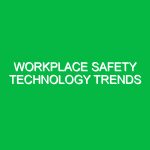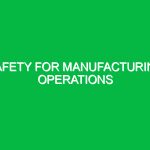Understanding Safety in Healthcare Settings
In the realm of Health, Safety, and Environment (HSE), the term “Safety in Healthcare Settings” encapsulates a broad range of practices and principles designed to protect patients, healthcare workers, and visitors. Safety is not merely about compliance; it is a vital component of quality care. When we think of healthcare, we often focus on the clinical aspects, such as diagnosis and treatment. However, the safety environment plays an equally crucial role in determining patient outcomes and overall satisfaction.
Healthcare facilities are complex environments where multiple stakeholders interact, from doctors and nurses to patients and their families. Each of these interactions carries inherent risks, making it essential to implement effective safety measures. For instance, a simple lapse in hygiene can lead to hospital-acquired infections (HAIs), which are a significant concern for patient safety. Thus, understanding the nuances of safety in healthcare settings is paramount for everyone involved.
Identifying Hazards and Risks in Healthcare Settings
Healthcare settings host a myriad of potential hazards and risks. Recognizing these hazards is the first step toward mitigating them effectively.
1. Biological Hazards
Biological hazards in healthcare primarily include exposure to pathogens that can cause infections. For example, the COVID-19 pandemic has highlighted the risks healthcare workers face daily. A nurse shared her experience of working in a COVID unit, where the fear of transmission loomed large. Despite strict protocols, the stress of potential exposure was palpable. Understanding the pathways of infection transmission—such as airborne droplets and contact with contaminated surfaces—is critical.
2. Chemical Hazards
Chemical hazards are omnipresent in healthcare settings. Healthcare workers frequently deal with various substances, including cleaning agents, disinfectants, and pharmaceuticals. Ingesting or improperly handling these chemicals can lead to severe health complications. An instance worth noting occurred at a major hospital where improper storage of hazardous drugs led to a contamination incident, putting staff and patients at risk. It emphasizes the importance of proper labeling and secure storage protocols.
3. Physical Hazards
Physical hazards encompass risks like slips, trips, and falls, which are common in healthcare facilities. Wet floors, cluttered hallways, and improperly maintained equipment can contribute to these accidents. A physical therapist once recounted how a simple spill led to a colleague’s injury, disrupting care and prompting a facility-wide review of safety protocols.
4. Ergonomic Hazards
Healthcare professionals often engage in repetitive tasks that can lead to musculoskeletal injuries. Lifting patients without proper techniques or equipment can result in chronic back pain. A personal story from a nurse illustrates this: after years of lifting patients manually, she developed a debilitating back condition that necessitated surgery. Ergonomics in healthcare should not be overlooked; proper training and equipment can significantly reduce these risks.
5. Workplace Violence
Workplace violence in healthcare settings is an alarming issue, with healthcare workers facing physical and verbal assaults. A nurse shared her experience of being threatened by a patient’s family member, an ordeal that left her shaken but determined to advocate for better safety measures. Establishing a zero-tolerance policy towards violence and providing training on de-escalation techniques can help create a safer environment.
Implementing Safety Precautions and Best Practices
Safety in healthcare settings requires a proactive approach. Below are detailed safety precautions and best practices that can be effectively implemented.
1. Infection Control Measures
To combat biological hazards, stringent infection control measures must be in place. These include:
– **Hand Hygiene**: Regular handwashing or using alcohol-based hand sanitizers is vital. A study showed that facilities promoting hand hygiene saw a notable reduction in HAIs.
– **Personal Protective Equipment (PPE)**: Appropriate PPE, such as masks, gloves, and gowns, should be readily available and used correctly.
– **Environmental Cleaning**: Regular disinfection of surfaces and equipment can significantly reduce pathogen transmission.
2. Chemical Safety Protocols
For managing chemical hazards, healthcare facilities should:
– **Proper Training**: Staff must receive training on the safe handling of chemicals, including understanding Safety Data Sheets (SDS).
– **Labeling and Storage**: All chemicals should be clearly labeled, and storage areas must be secure and organized.
– **Emergency Procedures**: Procedures for accidental spills or exposure should be clearly outlined and practiced.
3. Fall Prevention Strategies
To mitigate physical hazards, effective fall prevention strategies include:
– **Regular Maintenance**: Ensure that floors are dry and free from obstructions. Routine inspections can help identify potential hazards.
– **Patient Education**: Educating patients about their mobility and the importance of calling for assistance can reduce fall incidents.
– **Use of Aids**: Providing assistive devices such as walkers or handrails can significantly enhance patient safety.
4. Ergonomic Training and Equipment**
To address ergonomic hazards, healthcare facilities should implement:
– **Ergonomic Assessments**: Regular assessments of workstations and tasks can identify potential ergonomic risks.
– **Training Programs**: Offering training on safe lifting techniques and the use of lifting devices can prevent injuries.
– **Rest Breaks**: Encouraging regular breaks can help staff avoid fatigue-related injuries.
5. Violence Prevention Programs
To safeguard against workplace violence, healthcare organizations should:
– **Staff Training**: Training on conflict resolution and de-escalation techniques can empower staff to handle aggressive situations.
– **Reporting Mechanisms**: Establish clear reporting channels for incidents of violence, ensuring staff feel supported.
– **Environmental Design**: Implementing design elements that enhance safety, such as adequate lighting and secure access points, can deter violence.
Regulations and Standards Governing Safety in Healthcare Settings
Several regulations and standards guide safety practices in healthcare settings. Familiarity with these is crucial for compliance and best practices.
1. Occupational Safety and Health Administration (OSHA)
OSHA sets and enforces standards to ensure safe working conditions. Healthcare facilities must comply with OSHA regulations, which cover everything from exposure to hazardous materials to maintaining a safe workplace.
2. The Joint Commission
The Joint Commission provides accreditation to healthcare organizations that meet specific safety and quality standards. Their focus on patient safety protocols encourages continuous improvement in healthcare settings.
3. Centers for Disease Control and Prevention (CDC)
The CDC offers guidelines on infection control, emphasizing the importance of preventing the spread of infectious diseases within healthcare facilities.
Conclusion
Safety in healthcare settings is a multifaceted issue that requires continuous attention and proactive measures. By identifying potential hazards, implementing best practices, and adhering to regulations, healthcare facilities can create safer environments for patients and staff alike.
Drawing from real-life experiences and industry insights, it becomes clear that safety is not just a checkbox on a compliance form; it is a cornerstone of quality healthcare. By prioritizing safety, healthcare settings can not only improve patient outcomes but foster a culture of care that resonates throughout the entire organization.
Each stakeholder, from administrators to frontline workers, plays a vital role in this collective effort. Embracing a culture of safety ensures that healthcare remains a beacon of hope and healing, even amidst the challenges it faces.


